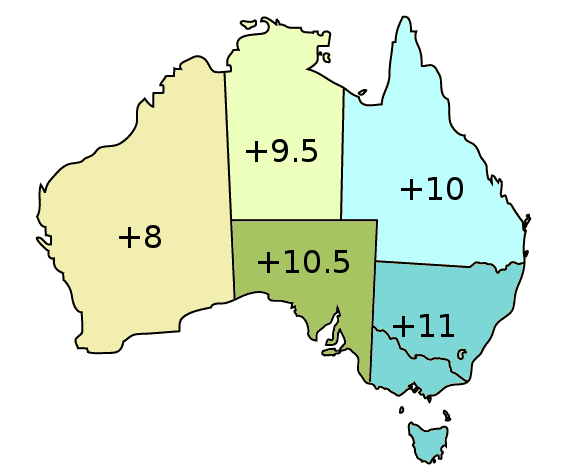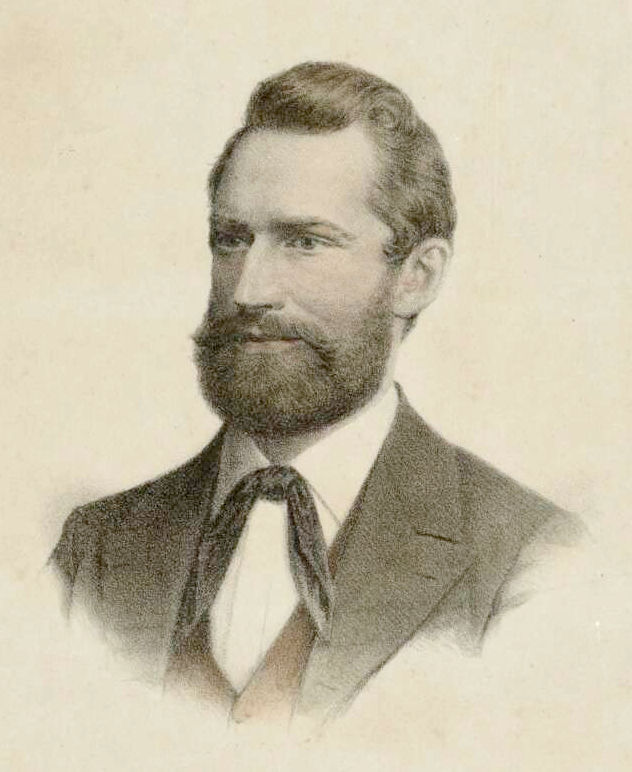|
Trunding
Trunding is a coastal locality in the Weipa Town Weipa Town is a local government area in Far North Queensland, Australia. It covers the town of Weipa on the western coast of the Cape York Peninsula, including the localities of Rocky Point, Trunding, Nanum, Evans Landing, and Weipa Airport. ..., Queensland, Australia. In the , Trunding had a population of 962 people. Geography Approximately one third of the land in Trunding is used for residential housing while the remainder is not developed. History The locality is believed to takes its name from Trunding Creek (possibly originally called Trundling Creek). References Weipa Town Coastline of Queensland Localities in Queensland {{Queensland-geo-stub ... [...More Info...] [...Related Items...] OR: [Wikipedia] [Google] [Baidu] |
Nanum, Queensland
Nanum is a coastal residential locality in Weipa Town, Far North Queensland, Australia. In the Nanum had a population of 921 people. Geography Nanum is situated between Trunding and Evans Landing, near the mouth of the Mission River. Approximately half of the land is used for residential housing while the remainder is undeveloped. Albatross Bay is off the coast to the north-west (), part of the Gulf of Carpentaria The Gulf of Carpentaria (, ) is a large, shallow sea enclosed on three sides by northern Australia and bounded on the north by the eastern Arafura Sea (the body of water that lies between Australia and New Guinea). The northern boundary .... Nanum Beach is a sandy strip () that extends along most of the Nanum coastline and north into neighbouring Trunding. History Nanum was established in the 1990s as the residential area of Weipa needed to grow southward. In the 2006 census, Nanum had a population of 728 people. In the 2011 census, Nanum h ... [...More Info...] [...Related Items...] OR: [Wikipedia] [Google] [Baidu] |
Rocky Point, Queensland (Weipa Town)
Rocky Point is a residential locality in the Weipa Town, Queensland, Australia. In the Rocky Point had a population of 1,957 people. Geography Over half of the land in Rocky Point is used for residential housing with the remainder undeveloped. History Weipa North State School opened on 14 March 1966. On 1 January 2002 it became the Weipa campus of the Western Cape College. In the Rocky Point had a population of 1,957 people. Amenities The Weipa Town Authority provides the Hibberd Library in Hibberd Drive. St Joseph's Catholic Church is on Boundary Road at Rocky Point. It is within the Weipa Parish of the Roman Catholic Diocese of Cairns. Education Western Cape College is a government primary and secondary (Early Childhood-12) school for boys and girls. Its Weipa Campus is at Central Avenue (). In 2017, the school had an enrolment of 958 students with 88 teachers (85 full-time equivalent) and 76 non-teaching staff (62 full-time equivalent). It includes a special ed ... [...More Info...] [...Related Items...] OR: [Wikipedia] [Google] [Baidu] |
Weipa Town
Weipa Town is a local government area in Far North Queensland, Australia. It covers the town of Weipa on the western coast of the Cape York Peninsula, including the localities of Rocky Point, Trunding, Nanum, Evans Landing, and Weipa Airport. It is an unusual local government area as it is not governed and managed by a council elected by residents but rather by the company Rio Tinto Aluminium (which operates a bauxite mine in the area) through a governing body called the Weipa Town Authority. In June 2018, Weipa Town had a population of 4,240. History In 1955, New Zealand geologist Harry Evans discovered bauxite (the raw material used to make aluminium) on the western coast of Cape York Peninsula while he was exploring for oil. Further surveys established it was the largest bauxite deposit in the world. In November 1957, the Queensland Government approved a £50 million project of the British Australian Consolidated Zinc group to develop a bauxite mine on the Cape York Pe ... [...More Info...] [...Related Items...] OR: [Wikipedia] [Google] [Baidu] |
Mission River, Queensland
Mission River is a coastal rural locality split between the Shire of Cook and the Aboriginal Shire of Napranum in Queensland, Australia. In the , Mission River had a population of 987 people. Geography Within Mission River are the enclaves of Evans Landing, Nanum, Rocky Point, Trunding, and Weipa Airport, all of which are part of Weipa Town. History '' Linngithigh'' (also known as ''Winda Winda'' and ''Linginiti'') an Australian Aboriginal language spoken by the Linngithigh people. The Linngithigh language region includes landscape within the local government boundaries of the Cook Shire Council: Western Cape York, Winda Winda Creek, Mission River, and Archer River. Thaynakwith (also known as Awngthim, Tainikuit and Winduwinda) is an Australian Aboriginal language spoken on Western Cape York in the Weipa area taking in Albatross Bay and Mission River. The language region includes areas within the local government boundaries of Weipa Town Council and Cook Shire. ... [...More Info...] [...Related Items...] OR: [Wikipedia] [Google] [Baidu] |
Albatross Bay
Albatross Bay is a bay on the eastern shores of the Gulf of Carpentaria, Queensland, Australia. Geography The bay is offshore from the localities of Mission River (in both Shire of Cook and Aboriginal Shire of Napranum), a number of localities in Weipa Town ( Rocky Point, Trunding, Nanum, Evans Landing) and Aurukun (in the Shire of Aurukun). Three rivers flow into the bay: * Mission River () * Embley River () * Hey River () History The bay was named after the Queensland Government's steamer ''Albatross''. The name was chosen either by its master Captain Kerr or by John Douglas when he was the Government Resident at Thursday Island Thursday Island, colloquially known as TI, or in the Kawrareg dialect, Waiben or Waibene, is an island of the Torres Strait Islands, an archipelago of at least 274 small islands in the Torres Strait. TI is located approximately north of Cap .... References {{Reflist Bays of Queensland Gulf of Carpentaria ... [...More Info...] [...Related Items...] OR: [Wikipedia] [Google] [Baidu] |
AEST
Australia uses three main time zones: Australian Western Standard Time (AWST; UTC+08:00), Australian Central Standard Time (ACST; UTC+09:30), and Australian Eastern Standard Time (AEST; UTC+10:00). Time is regulated by the individual state governments, some of which observe daylight saving time (DST). Australia's external territories observe different time zones. Standard time was introduced in the 1890s when all of the Australian colonies adopted it. Before the switch to standard time zones, each local city or town was free to determine its local time, called local mean time. Now, Western Australia uses Western Standard Time; South Australia and the Northern Territory use Central Standard Time; while New South Wales, Queensland, Tasmania, Victoria, Jervis Bay Territory, and the Australian Capital Territory use Eastern Standard Time. Daylight saving time (+1 hour) is used in jurisdictions in the south and south-east: South Australia, New South Wales, Victoria, Tasm ... [...More Info...] [...Related Items...] OR: [Wikipedia] [Google] [Baidu] |
Electoral District Of Cook
Cook is an electoral district in Queensland, Australia. Cook covers the vast Cape York Peninsula north of Cairns, including the resort town of Port Douglas and the Torres Strait Islands. It is named after British navigator James Cook, who charted the coast and landed on Possession Island – one of the Torres Strait islands – in 1770. History 1883 election In the 1883 election, there were four candidates for the (then) two-member electorate. They were: * Thomas Campbell * Frederick Cooper (one of the sitting members) * John Hamilton * Charles Lumley Hill (a former member in Gregory) Cooper and Hamilton were elected, but there were allegations of "ballot stuffing", specifically that there were too many votes cast at the California Gully and Halpin's Creek polling stations given the number of electors. The unsuccessful candidates, Campbell and Hill, petitioned to overturn the ballot. In December 1883, arrests were made in connection with the ballot stuffing. On 4 ... [...More Info...] [...Related Items...] OR: [Wikipedia] [Google] [Baidu] |
Division Of Leichhardt
The Division of Leichhardt is an Australian Electoral Division in Queensland. Geography Since 1984, federal electoral division boundaries in Australia have been determined at redistributions by a redistribution committee appointed by the Australian Electoral Commission. Redistributions occur for the boundaries of divisions in a particular state, and they occur every seven years, or sooner if a state's representation entitlement changes or when divisions of a state are malapportioned. History The division was first contested in 1949 after the expansion of seats in the Parliament of Australia. It is one of Australia's largest electorates, covering an area stretching from Cairns to Cape York and the Torres Strait, including the Torres Strait Islands. The division is named after Ludwig Leichhardt, an explorer and scientist. The area was first covered by the seat of Herbert from 1901 to 1934 and then by the seat of Kennedy until 1949. Most of the electorate is almost uni ... [...More Info...] [...Related Items...] OR: [Wikipedia] [Google] [Baidu] |
Suburbs And Localities (Australia)
Suburbs and localities are the names of geographic subdivisions in Australia, used mainly for address purposes. The term locality is used in rural areas, while the term suburb A suburb (more broadly suburban area) is an area within a metropolitan area, which may include commercial and mixed-use, that is primarily a residential area. A suburb can exist either as part of a larger city/urban area or as a separate ... is used in urban areas. Australian postcodes closely align with the boundaries of localities and suburbs. This Australian usage of the term "suburb" differs from common American and British usage, where it typically means a smaller, frequently separate residential community outside, but close to, a larger city. The Australian usage is closer to the American or British use of "district" or "neighbourhood", and can be used to refer to any portion of a city. Unlike the use in British or American English, this term can include inner-city, outer-metropolitan ... [...More Info...] [...Related Items...] OR: [Wikipedia] [Google] [Baidu] |
Queensland
) , nickname = Sunshine State , image_map = Queensland in Australia.svg , map_caption = Location of Queensland in Australia , subdivision_type = Country , subdivision_name = Australia , established_title = Before federation , established_date = Colony of Queensland , established_title2 = Separation from New South Wales , established_date2 = 6 June 1859 , established_title3 = Federation of Australia, Federation , established_date3 = 1 January 1901 , named_for = Queen Victoria , demonym = , capital = Brisbane , largest_city = capital , coordinates = , admin_center_type = Administration , admin_center = Local government areas of Queensland, 77 local government areas , leader_title1 = Monarchy of Australia, Monarch , leader_name1 = Charles III , leader_title2 = Governor of Queensland, Governor , leader_name2 = Jeannette Young , leader_title3 = Premier of Queensland, Premier , leader_name3 = Annastacia Palaszczuk (Australian Labor Party (Queensland Branch), AL ... [...More Info...] [...Related Items...] OR: [Wikipedia] [Google] [Baidu] |
Coastline Of Queensland
The coast, also known as the coastline or seashore, is defined as the area where land meets the ocean, or as a line that forms the boundary between the land and the coastline. The Earth has around of coastline. Coasts are important zones in natural ecosystems, often home to a wide range of biodiversity. On land, they harbor important ecosystems such as freshwater or estuarine wetlands, which are important for bird populations and other terrestrial animals. In wave-protected areas they harbor saltmarshes, mangroves or seagrasses, all of which can provide nursery habitat for finfish, shellfish, and other aquatic species. Rocky shores are usually found along exposed coasts and provide habitat for a wide range of sessile animals (e.g. mussels, starfish, barnacles) and various kinds of seaweeds. Along tropical coasts with clear, nutrient-poor water, coral reefs can often be found between depths of . According to a United Nations atlas, 44% of all people live within 5 km (3.3mi) o ... [...More Info...] [...Related Items...] OR: [Wikipedia] [Google] [Baidu] |






